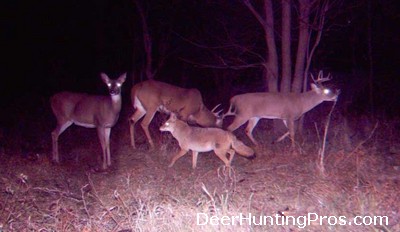White-tailed deer management is all about producing better deer and deer hunting on a property. Predators such as coyotes can cause deer predation, jeopardizing management efforts. During the last half of the twentieth century, the much of the U.S. has experienced an increase in the abundance of white-tailed deer, with many areas even suffering damage from overabundant deer. Many deer hunting ranches have manipulated whitetail herds to levels that exceed the carrying capacity of the habitat through supplemental feeding. Many whitetail populations have grown naturally.
Thirty to 50 years ago, deer predators were controlled through shooting and trapping. This occurred on a landscape level because of the commercial fur trade and small mom-and-pop livestock producers. Things have changed. A growing body of research now indicates that the establishment and increase of coyote populations have begun to affect deer populations in some areas. The evidence is indicated through declines in deer recruitment rates, with predation by coyotes resulting in decreasing whitetail numbers. While this predator-related mortality may be additive in some places, impacting deer hunting opportunities, lower deer numbers have likely helped habitat in areas that were experiencing deer overpopulation.

Fawn recruitment at one site in Texas declined from almost one fawn per doe prior to the arrival of coyotes to 0.38 fawns per doe in recent years. Radio-telemetry research on fawns at that study site, as well as in Michigan, determined that low recruitment was attributable to exceedingly high levels of predation by coyotes on young whitetail. The number of adult deer observed during that time declined, so it should be assumed that deer hunting opportunities declined during the same period as a result of coyote predation.
Similar deer-predator research in Alabama, Georgia, and South Carolina all reported increased fawn recruitment after intensive experimental coyote control (removal). These data indicate that predation by coyotes curbed whitetail recruitment in those areas. Other research has found that whitetail deer populations are most heavily impacted by coyotes on properties where deer habitat is degraded or lacking. Providing high quality fawning habitat should be a priority of ranches interested in whitetail deer management.
To sum up, deer predation by coyotes can be high in some situations, particularly where doe/antlerless deer harvest is high, and can have dramatic, detrimental effects on deer populations. Deer herds found within high fenced properties are especially susceptible to coyote predation because of the increased hunting efficiency of coyotes within these enclosures. Coyotes can used fences to funnel and corner deer, increasing their ability to kill all ages of whitetail.
Coyotes are smart predators with the ability to reproduce rapidly. This makes them difficult to control throughout their range. The potential impact of coyotes on deer hunting and management activities seems obvious. Of course, research has also found that coyotes impact other game and non-game animals negatively when present in high numbers. Predator control focused on coyote removal may be well-warranted on properties interested in stable whitetail populations for deer hunting and overall wildlife management. Coyotes do serve a role when they catch and kill sick animals, so low numbers of coyotes, especially in areas of good habitat, do not pose a problem to whitetail populations.